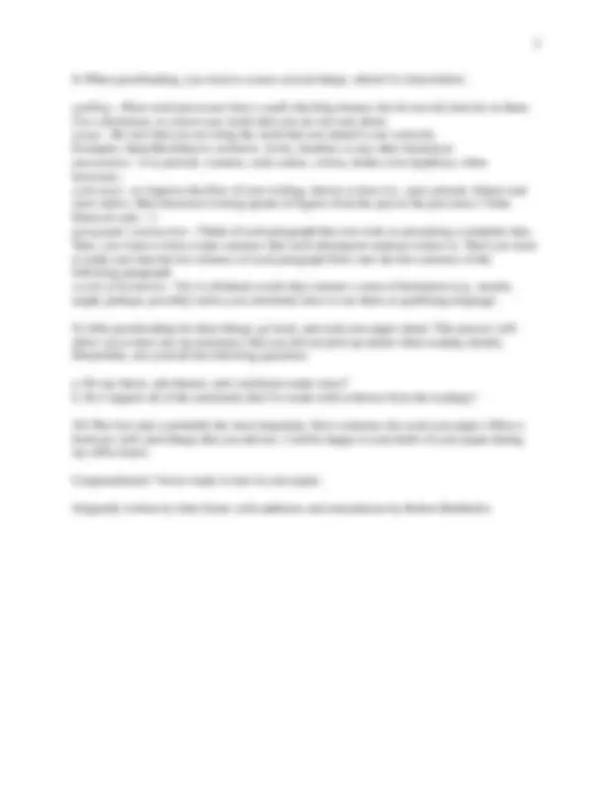



Study with the several resources on Docsity

Earn points by helping other students or get them with a premium plan


Prepare for your exams
Study with the several resources on Docsity

Earn points to download
Earn points by helping other students or get them with a premium plan
Community
Ask the community for help and clear up your study doubts
Discover the best universities in your country according to Docsity users
Free resources
Download our free guides on studying techniques, anxiety management strategies, and thesis advice from Docsity tutors
A ten-step process for writing an effective thought paper, comparing the task to building a house. The process includes pre-reading exercises, creating a thesis statement, writing sub-themes, and outlining the paper. It also covers proofreading and getting feedback from others.
Typology: Schemes and Mind Maps
1 / 2

This page cannot be seen from the preview
Don't miss anything!


Writing a Thought Paper: The Ten-Step Process
There are many things that go into writing a good thought paper. One might compare it to building a house. Think about it: if you do not take the time to plan for construction, the house will fall. Writing a good thought paper is similar. Here is a ten-step process to help you write better thought paper. These guidelines will help you in writing any essay.
Suggested Thought Paper Format:
A. Introductory paragraph
B. Body of the paper
C. Conclusion
spelling —Most word processors have a spell-checking feature, but do not rely heavily on them. Use a dictionary, to correct any words that you are not sure about. usage —Be sure that you are using the word that you intend to use correctly. Examples: there/their/they're, no/know, it's/its, lead/led, or any other homonym punctuation —Use periods, commas, semi-colons, colons, dashes (two hyphens), when necessary. verb tense —to improve the flow of your writing, choose a tense (i.e., past, present, future) and stick with it. Most historical writing speaks of figures from the past in the past tense ("John Hancock said..."). paragraph construction —Think of each paragraph that you write as presenting a complete idea. Thus, you want to form a topic sentence that each subsequent sentence relates to. Then you want to make sure that the last sentence of each paragraph flows into the first sentence of the following paragraph. words of hesitation —Try to eliminate words that connote a sense of hesitation (e.g., maybe, might, perhaps, possibly) unless you absolutely have to use them as qualifying language.
a. Do my thesis, sub-themes, and conclusion make sense? b. Do I support all of the statements that I've made with evidence from the readings?
Congratulations! You're ready to turn in your paper.
Originally written by John Grant, with additions and emendations by Robert Berkhofer.